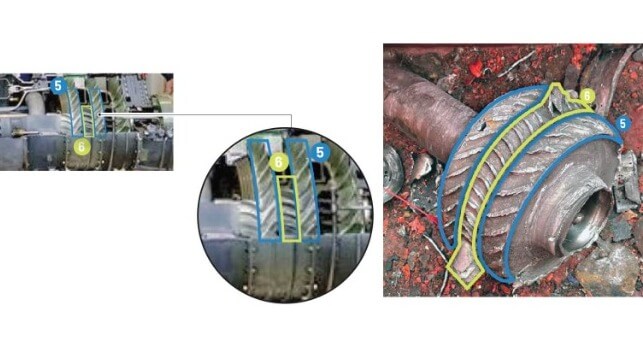U.S. Links Missile Parts From Red Sea Tanker Attack to Iranian Suppliers

The U.S. Defense Intelligence Agency (DIA) has released new proof of Iranian support for Yemen's Houthi rebel movement, including physical evidence linking Iranian anti-ship missile technology to known Houthi attacks on merchant shipping.
U.S. and allied Western forces have repeatedly intercepted covert Iranian weapons shipments bound for Yemen, typically aboard traditional wooden dhows in the Gulf of Oman and Gulf of Aden. More than a dozen intercepts have been disclosed, including six consignments of parts or fuel for medium-range ballistic or cruise missiles.
The most recent seizures occurred on January 11 (in a tragic raid that cost the lives of two U.S. Navy SEALs) and January 28. These two interdictions turned up propulsion, guidance systems and warheads for medium-range ballistic missiles and antiship cruise missiles, both of which have been used in Houthi attacks on merchant shipping in the Red Sea and Gulf of Aden. Some of these seized parts were a match for the Iranian Noor-series antiship cruise missile.
Additional evidence from a known Houthi attack provides even more detailed confirmation. On December 10, Houthi forces launched an antiship cruise missile at the Norwegian-flagged tanker Strinda at a position about 60 nautical miles north of the Strait of Bab el-Mandeb, off the coast of Houthi-controlled territory. The ship was damaged and caught fire, and a U.S. Navy destroyer responded to assist. The blaze was brought under control and no injuries were reported.
After the attack, investigators boarded the Strinda to recover evidence from the scene and ensure that there were no continued risks to the vessel or the crew. U.S. Central Command found the blast-damaged remains of turbojet engine parts onboard the Strinda, like the engine components found inside a cruise missile.
According to DIA, Iranian media previously released cutaway photos of the Noor's turbojet engine in a public announcement in 2017, so the munition's internal layout is known. The shape of the turbojet engine shaft and vanes matched up with the official photo of the Noor's internals, according to DIA analysts - corroborating previous evidence of supplies of Iranian Noor components to Houthi forces.
The Iranian rocket motor components recovered in the January 11 dhow raid also match closely with the remains of Houthi medium-range ballistic missiles that were used in attacks on Saudi Arabia in 2017, during the peak of the Saudi intervention in the Yemeni civil war. Likewise, Iranian 358-class surface to air missiles have been spotted in Houthi possession and in dhow shipments intercepted on the way to Yemen.
Iran denies supplying arms to Houthi forces, and the Houthi movement claims that its missile technology is indigenously developed. However, Yemen did not have an advanced defense aerospace industry prior to the start of the Yemeni civil war in 2014, the year that these weapons began to enter into front-line use with Houthi forces.
